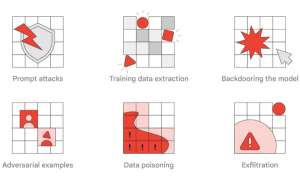— January 22, 2018

Hiring a solid team can be hard and going through the process of talent acquisition can be a bit of a headache. Keeping that team happy and working in harmony is challenging and sometimes we need to have hard conversations. Luckily, the reward of handing these tough conversations with care can make all the challenges worth it.
Talking to employees about improvements we need to see can be intimidating and if handled incorrectly can backfire. This can result in stressful internal dynamics, unnecessary loss of team members, or worse. Yikes.
My honest opinion is that talking to a team about improvements we need to see can be a good experience. I swear, I’m not blindly optimistic here. Think about it this way, this person was interviewed, is qualified, and accepted the job. With that in mind, as long as they’re coachable and willing to work and grow, then we shouldn’t have any issue identifying and solving performance issues.
So, let’s talk about how to talk to this person in a way that identifies how they’re underperforming, their current process, some ways to improve, and clearly identifies what success looks like.
Find Out If They Notice Any Performance Issues
It’s incredibly possible that the person knows something isn’t working out. For example, if the person is working really hard and is still falling behind they probably know it.
However, if their quality of work isn’t up to your standards you have to tell them. Explaining this in plain language and sharing an example of what you consider acceptable quality is also helpful. At this point, it might be a good idea to stand back and actually determine if you have a standardized executive strategy. If you don’t, it might be best to get one established so you can hold your team to a clearly identified standard.
Starting the conversation off with what’s going on and what’s not working can open the door for excuses and it’s important to look past excuses.
I like to mention that I want them to be coachable. I think they’re skilled and capable, otherwise, they wouldn’t work here, and I want to work together. However, I don’t want them to excuse what I’ve been noticing.
Identify The Underperformance In Question
After you’ve let them know that you want them to be coachable and appreciate having them on the team, identify where we need to see improvement. Then, ask them if they agree add really listen to their response. Remember, don’t engage excuses, but pay close attention to how they perceive the critique.
Recently, I went through this process with someone on my team and while they agreed with what I was saying they felt like maybe I didn’t have the whole idea. I told them that I needed them to increase the quantity of work that they’re shipping out. Then, they told me that they’re having process issues and quality concerns.
Basically, they didn’t know of a process that worked well for them and they didn’t understand the level of quality they need to uphold.
Information like this gold! It shaped the rest of the conversation and led to us having a very productive exchange. By the time we were done talking we were in alignment and they were excited to get back to work. Jackpot.
Discuss Their Current Process
They might not share this information as easily as the member of my team, and if they don’t, ask them to. They might be a little apprehensive about this, so you should remind them that you want to coach them and work together to get through this.
Overseeing a team of people who are doing work that you’re pretty familiar with gives you insight into how all of these people are working together. And that provides a very balanced perspective on how this person’s work is impacting the whole.
Chances are after they go through their process you’ll see a few places where they can improve.
Present An Idea That Might Improve Employee Performance
Chances are before you even have this meeting you have an idea of how they could work better. This is especially true when talking with implementation team members who are doing tactical work. It’s very common that these individuals are hard working, smart, and skillful, but might be working harder than they need to.
Avoid presenting this solution as a way they have to work
Remember we’re giving advice on how they can work better. That said, we’re not telling them what to do.
In the conversation I had with a team member recently, I talked about a method I’ve used to improve my workflow. Using real-life examples can be very impactful in explaining why you’re recommending this process.
I showed a Google Doc while I was talking through my process. This allowed me to show the process and a timestamp of how long each step in it took. I also gave advice on how I made my motions more impactful by sharing tips on how to work smarter.
This made my recommendations clear, achievable, and helpful rather than condescending or discouraging. I can empathize with working very hard and being discouraged with a conversation like this. So, keeping the conversation helpful is super important.
Trying a recommendation into their current process helps give them a sense of direction in making adjustments.
I usually try to position my recommendations in relation to their process by discussing:
- How this new idea is similar to their current process
- One thing they should keep doing and the importance of building this process around that
- The vast differences between the two processes
Clearly State What Success Looks Like
If tying recommendations to their current process gives them direction, then talking about what success looks like will orient them to success.
I also like to give a couple different perspectives on what success looks like. First of all, I discuss what I need to see happen in terms of their specific work. But I also have higher level goals in mind. Letting them know how their work is going to impact the team and feed into goals at a higher level can give them a sense of purpose.
If the team is ready to be coached and wants to work, then coming to a mutual consensus of shifting for success should be possible. This is at the heart of improving employee performance, and with this process, we can be successful without being a jerk.
Business & Finance Articles on Business 2 Community
(66)
Report Post







